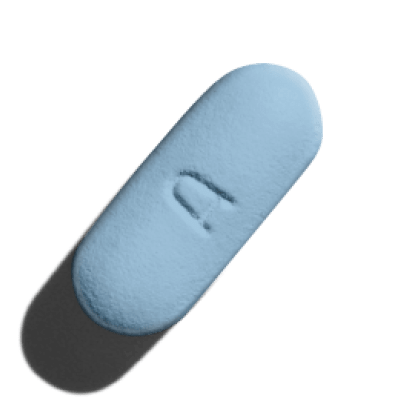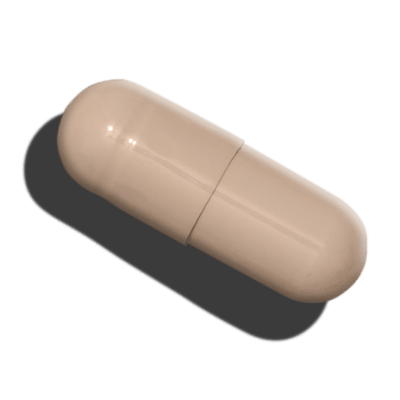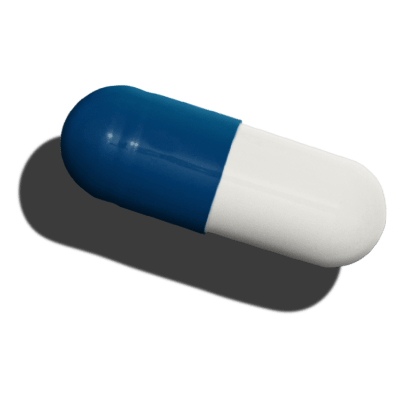Content
Seeking support for your mental health?
Prozac® Dosage Guide

Fluoxetine, commonly sold as Prozac®, is an antidepressant that’s used to treat several mental health conditions.
As a selective serotonin reuptake inhibitor, Prozac and generic fluoxetine work by increasing the amount of serotonin in your brain.
Many people who use Prozac and similar types of medication find that they’re effective at controlling their symptoms and improving their mood.
Content
Prozac is prescribed in a range of dosages to treat several conditions, including depression and certain anxiety disorders.
Below, we’ve explained what Prozac is and how it works as an antidepressant.
We’ve also listed typical dosages of Prozac for conditions such as major depressive disorder, panic disorder and obsessive-compulsive disorder (OCD).
Finally, we’ve listed the key side effects and potential interactions that you should be aware of if you’re prescribed Prozac or generic fluoxetine.
What Is Prozac?
Prozac is a brand name for fluoxetine, a selective serotonin reuptake inhibitor (SSRI). Prozac is prescribed to treat a range of mental health conditions, including the following:
Major depressive disorder (MDD, or major depression)
Obsessive-compulsive disorder (OCD)
Panic disorder, with or without agoraphobia
Bulimia nervosa
In some cases, Prozac may be combined with other medications to treat specific conditions. For example, a combination of Prozac and olanzapine (Zyprexa®) is often used to treat depressive episodes associated with bipolar disorder, as well as treatment-resistant depression.
If you’ve been diagnosed with any of the conditions mentioned above, your healthcare provider may recommend Prozac or a similar medication to manage your symptoms and help you make progress towards recovery.
Our guide to SSRIs goes into more detail about how Prozac and other medications in this class work to treat depression, anxiety and other mental health conditions. You can also read specifically about Prozac for anxiety in this guide.
Prozac Dosages
Prozac is used to treat several mental health conditions. Your dosage of Prozac may vary based on the specific mental health issue you’re facing and the severity of your symptoms.
We’ve listed the typical dosages of Prozac for depression, obsessive-compulsive disorder, panic disorder and other conditions below.
Prozac Dosage for Depression
Prozac is most commonly used to treat depression. The standard dosage for major depressive disorder is 20mg per day, taken in the morning.
Research shows that this dosage produces an improvement for most people with depression.
As with other SSRIs, the effects of Prozac aren’t instant. It may take several weeks for Prozac to produce a noticeable improvement in your mood and other depression symptoms.
If you don’t experience any positive change in your mood after taking Prozac at this dosage for several weeks, your healthcare provider may adjust your dosage up to a maximum of 80mg of Prozac (or generic fluoxetine) per day.
At dosages of 20mg or more per day, your healthcare provider may instruct you to take Prozac in the morning and later in the day in separate doses.
In children, Prozac is typically used at a lower dosage of 10mg per day. This may be adjusted over time based on the child’s response to the medication.
Prozac Dosage for Obsessive-Compulsive Disorder (OCD)
Prozac is prescribed to treat obsessive-compulsive disorder (OCD) at a starting dosage of 20mg per day, taken in the morning.
If this dosage isn’t effective after several weeks, it may be adjusted up to a maximum dosage of 60mg per day.
If you’re prescribed Prozac at a dosage greater than 20mg per day, you may be instructed to take your medication twice daily (for example, in the morning and at noon).
In children and adolescents with OCD, Prozac is typically used at a starting dosage of 10mg per day.
This may be adjusted over time based on the child or adolescent’s symptoms and overall response to the medication.
Prozac Dosage for Panic Disorder
Prozac is typically prescribed to treat panic disorder at a starting dosage of 10mg per day. This may be increased to 20mg per day after one week.
If you do not experience improvements from Prozac at a daily dosage of 20mg, your healthcare provider may increase your dosage up to a maximum of 60mg per day.
Prozac Dosage for Bulimia Nervosa
Prozac is prescribed at a dosage of 60mg per day to treat bulimia nervosa, or bulimia. If you’re prescribed Prozac for this purpose, your healthcare provider may instruct you to slowly increase your dosage up to 60mg per day over several days or weeks.
Currently, research shows that lower dosages of Prozac (for example, dosages similar to those used to treat depression) are not effective at treating bulimia nervosa
Prozac vs. Prozac Weekly™
Prozac comes in two forms: daily-use Prozac and Prozac Weekly. The weekly version of Prozac contains a larger dosage of fluoxetine and has an enteric coating that slows down its absorption and release into your bloodstream.
Each Prozac Weekly capsule contains 90mg of fluoxetine. As its name suggests, you’ll need to take this form of Prozac one time per week.
Your healthcare provider may prescribe this long-acting version of Prozac if you’ve shown good results with the daily-use version of Prozac.
Make sure to closely follow your healthcare provider’s instructions and use Prozac Weekly only as prescribed.
Generic Fluoxetine Forms
Currently, the brand name medication Prozac is only manufactured in capsule form as Prozac or Prozac Daily.
Generic fluoxetine (the active ingredient in Prozac and Prozac Daily) is available as a capsule, a tablet and as a liquid solution for oral use.
If you use generic fluoxetine, it’s important to check the dosage form and verify that you’re using the correct amount of this medication.
Prozac Side Effects & Interactions
Prozac is a common medication that’s used by millions of people in the United States. Although it’s a safe and effective medication for most people when used as directed, it can cause a range of side effects.
Common side effects of Prozac and generic fluoxetine include:
Abnormal dreams
Abnormal ejaculation (difficulty ejaculating)
Anorexia
Anxiety
Asthenia (physical weakness or lack of energy)
Decreased libido
Diarrhea
Dry mouth
Dyspepsia (indigestion)
Flu-like symptoms
Impotence (erectile dysfunction)
Insomnia
Nausea
Nervousness
Pharyngitis (sore throat)
Rash
Sinusitis (sinus inflammation)
Somnolence (drowsiness or sleepiness)
Sweating
Tremor (involuntary shaking)
Vasodilation
Yawning
These side effects may first start to occur during the first few weeks of treatment and improve on their own over time.
If you experience persistent side effects after you start treatment with Prozac, it’s important to inform your healthcare provider.
They may suggest making changes to the way you take your medication, such as using it in the morning only or with a meal.
Although rare, Prozac can cause more serious side effects, including worsening of depression symptoms, seizures, mania and, in some cases, allergic reactions that may involve swelling in the face, mouth, tongue and eyes, rash, itching and difficulty breathing or swallowing.
Like other SSRIs, Prozac carries a black box warning from the FDA notifying of an increase in the risk of suicidal thoughts and behavior in adults up to 24 years of age.
If you experience any severe side effects after using Prozac, contact your healthcare provider as soon as possible.
As an SSRI, Prozac may interact with other medications that affect serotonin levels, including other antidepressants. In some cases, this can lead to a life-threatening reaction referred to as serotonin syndrome.
Prozac and other SSRIs are particularly dangerous to use with monoamine oxidase inhibitors (MAOIs), an older class of antidepressants.
These medications can linger inside the body for weeks at a time and cause severe and unsafe interactions.
Other medications and supplements, including pain medications and over-the-counter products such as St. John’s wort, can also interact with Prozac and other SSRIs used to treat depression, OCD, panic disorder and other conditions.
To avoid interactions, make sure to inform your healthcare provider about all medications you currently use or have recently used before using Prozac.
talk to a psychiatry provider. it’s never been easier
How to Use Prozac Effectively
Your healthcare provider may prescribe Prozac if you’ve been diagnosed with depression, panic disorder, obsessive-compulsive disorder (OCD) or bulimia nervosa.
To get the best effects from Prozac, make sure to:
Take Prozac exactly as directed. If you’re prescribed Prozac for use once per day, take it in the morning. If you need to take Prozac twice per day, your healthcare provider will typically recommend taking one dose in the morning and the other at noon.If you’re prone to insomnia, your healthcare provider may suggest only taking Prozac in the morning.
Use Prozac with or without food. It’s okay to take Prozac on its own or with a meal. If you’re prone to side effects from Prozac, using your medication with a meal may help to make them less severe.
Store Prozac away from light and at room temperature. Choose a secure location in your home that’s between 59° and 86°F (15° to 30°C). Make sure to keep Prozac and other medications away from young children.
Expect to wait several weeks for noticeable results. Prozac works, but results aren’t immediate. Keep using your medication every day, even if you don’t notice any changes in your symptoms during the first few weeks of treatment.
Be alert for changes in your mood. Although uncommon, Prozac and other SSRIs can cause sudden mood changes. Make sure to inform your healthcare provider if you feel a sudden negative change in your mood or experience suicide-related thoughts.
Don’t stop using Prozac suddenly. Although Prozac is less likely to cause withdrawal symptoms than other SSRIs, it’s still important to check with your healthcare provider if you would like to stop using this medication.
Guide to Prozac Dosages
Prozac is one of the most well-known and widely-used medications for depression. It’s typically prescribed at a dosage of 10 to 80mg per day to treat mental health issues such as depression, panic disorder, obsessive-compulsive disorder and bulimia nervosa.
If you’re prescribed Prozac or generic fluoxetine, make sure to follow your healthcare provider’s instructions and only use your medication as directed.
You can learn more about Prozac and similar medications in our complete list of medications for depression. You can also access our complete range of mental health resources online to learn more about depression, anxiety, stress and other common conditions.
2 Sources
- PROZAC (fluoxetine capsules) for oral use. (2017, January). Retrieved from https://www.accessdata.fda.gov/drugsatfda_docs/label/2017/018936s108lbl.pdf
- Fluoxetine. (2020, March 15). Retrieved from https://medlineplus.gov/druginfo/meds/a689006.html
Editorial Standards
Hims & Hers has strict sourcing guidelines to ensure our content is accurate and current. We rely on peer-reviewed studies, academic research institutions, and medical associations. We strive to use primary sources and refrain from using tertiary references. See a mistake? Let us know at [email protected]!
This article is for informational purposes only and does not constitute medical advice. The information contained herein is not a substitute for and should never be relied upon for professional medical advice. Always talk to your doctor about the risks and benefits of any treatment. Learn more about our editorial standards here.
Kristin Hall, FNP
Kristin Hall is a board-certified Family Nurse Practitioner with decades of experience in clinical practice and leadership.
She has an extensive background in Family Medicine as both a front-line healthcare provider and clinical leader through her work as a primary care provider, retail health clinician and as Principal Investigator with the NIH.
Certified through the American Nurses Credentialing Center, she brings her expertise in Family Medicine into your home by helping people improve their health and actively participate in their own healthcare.
Kristin is a St. Louis native and earned her master’s degree in Nursing from St. Louis University, and is also a member of the American Academy of Nurse Practitioners. You can find Kristin on LinkedIn for more information.




